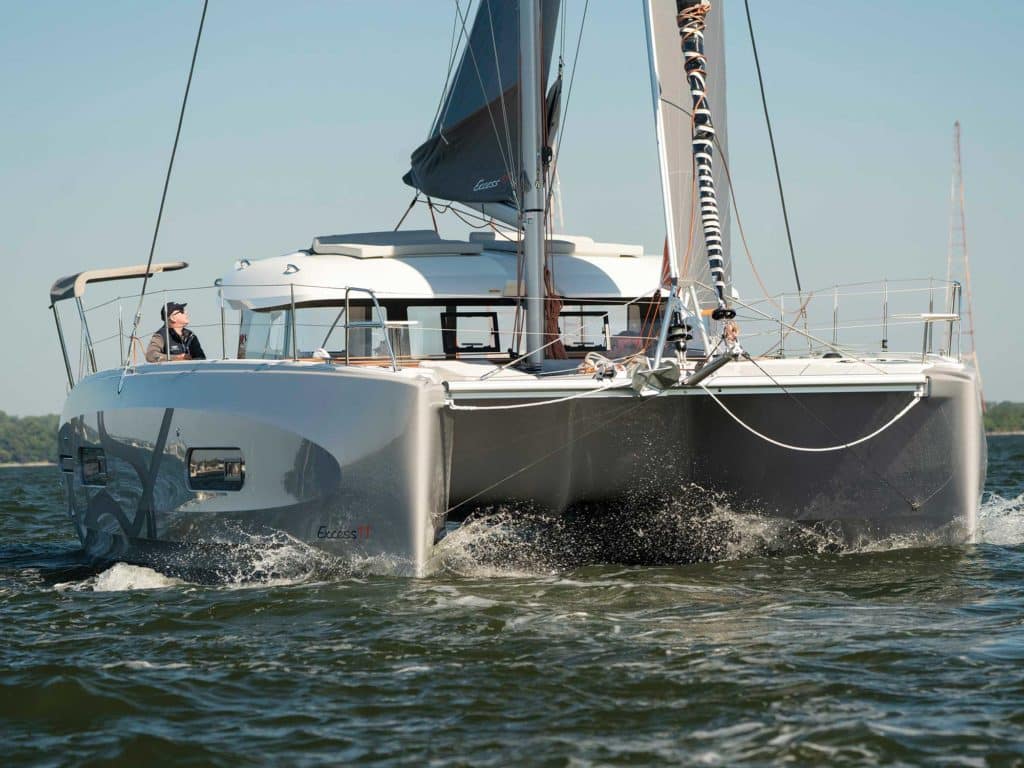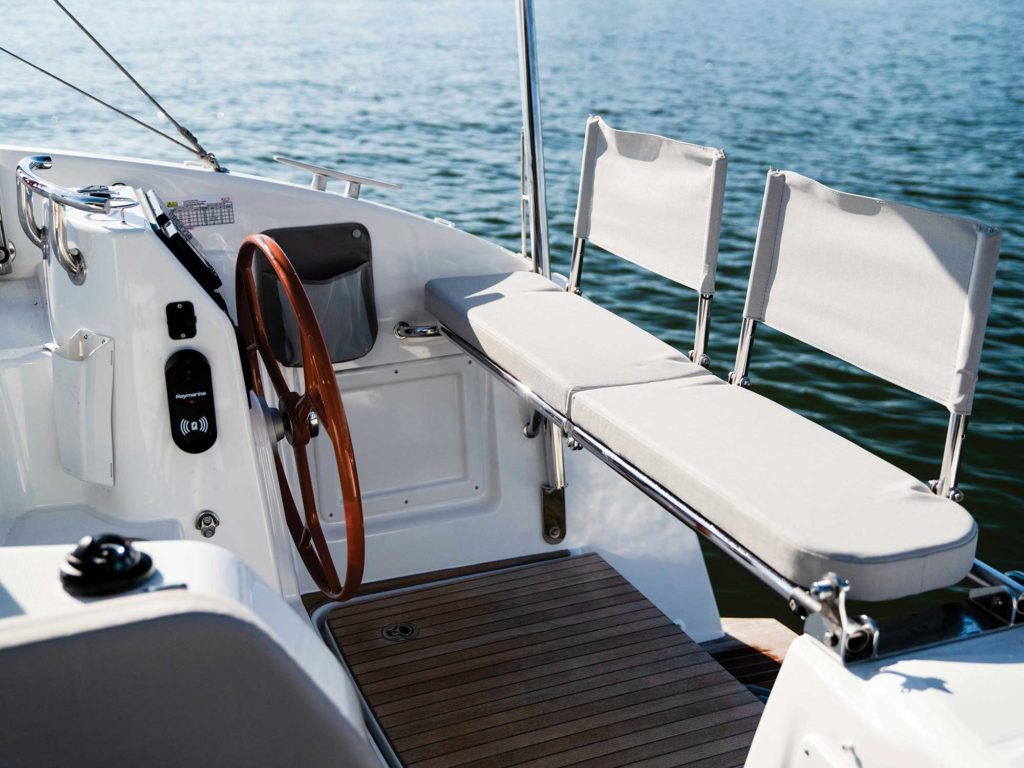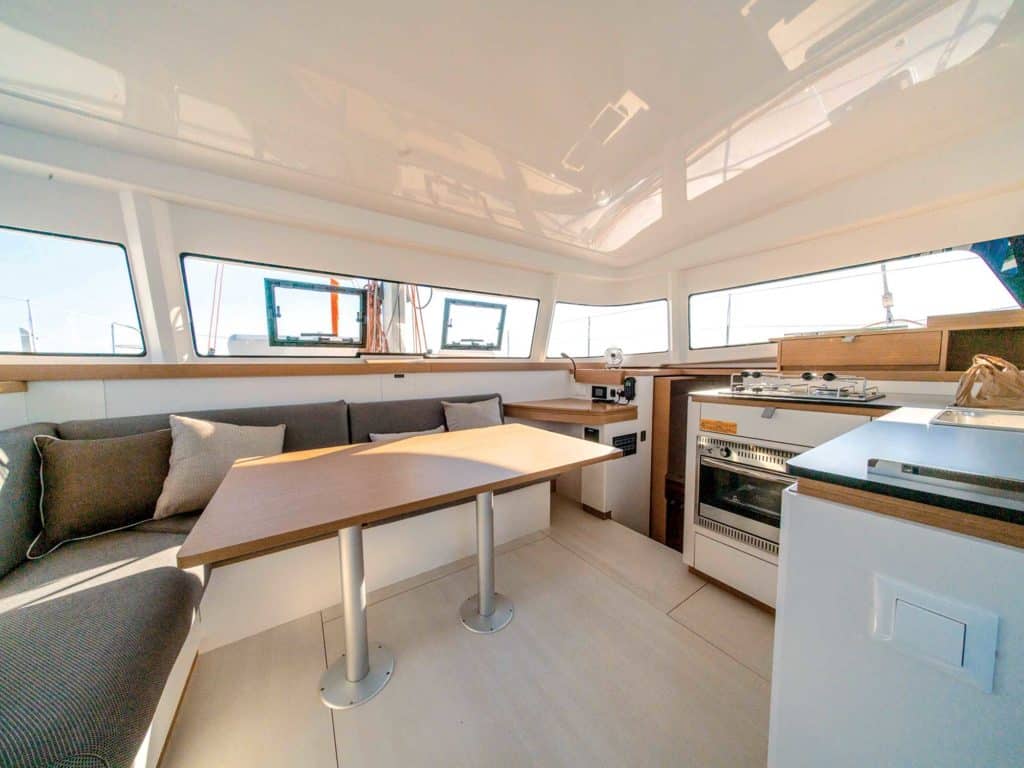
When you test the fleet of new boats that are introduced every year—year in and year out, as we at Cruising World have been doing with our annual Boat of the Year contest for over two decades now—you begin to identify the shifting trends in boat design and construction as they inevitably occur. (Remember the total proliferation of “deck/saloon” layouts?) For 2021, as we put the dozen yachts that cleared the COVID-19 hurdles to become BOTY nominees through their paces, we began to sense some themes shared by many of the entrants that were unmistakable. It was beyond coincidental.
Superior sailing performance should always be a common denominator in any collection of solid, well-conceived sailboats, but for 2021, it seemed to be a higher priority than in previous years. Which is very cool. With that a given, what struck our judges even more strongly was the way in which space was allocated aboard the nominees, and moreover, that the designers and builders of monohulls and multihulls alike were seeking similar solutions: This is new because catamaran and monohull sailors have often striven—it seemed to us—to underscore their differences, not their similarities.
By the very nature of their form and utility, working spaces and social spaces on sailing craft have always been somewhat segregated. As they need to be. But what if there were a concerted effort to assimilate the two, where the designer strives to incorporate the saloon and/or cockpit with the helm stations and/or sailhandling areas? And so that there isn’t a delineated definition between the “sailors” and “passengers,” but rather integrated areas that make the entire experience more fun and rewarding for all?
We saw it again and again this year, on the luxury, million-dollar semicustom marvels like the HH 50 cat and the Hylas 60 monohull, as well as the pure production cruisers like the Beneteau Oceanis Yacht 54 and the Dufour 530.
But nowhere did we see space used in such a thoughtful, pleasant, workable, innovative manner than in a pair of new French catamarans: the 37-foot Excess 11 and the 45-foot Excess 15.
Which made us dig a bit deeper. And we suddenly realized that no single nominee did so many things as well as the simple little Excess 11. Certainly no other boats used space so effectively. Sure, the features might be more compact, but there’s a real nav station, a good galley, an expansive owner’s cabin, tramps forward, an effective cockpit…all the boxes are well-checked. Then there was the fact that, other than the Corsair 880 sportboat, no boat was less expensive. And while plenty of boats sailed as well as the 11—as one would expect on larger boats with longer waterlines—relatively speaking, none sailed any better.
Which is when it dawned on us: The Excess 11 was 2021′s Overall Boat of the Year.
Wow. What a surprise.

We’ll confess that when the Excess brand was launched just this past year, we didn’t totally get the concept. After all, the brand’s parent company, Groupe Beneteau, already had a well-established catamaran fleet in its stable: Lagoon. You need more cats? Really? Was Excess meant to be a bargain brand?
The answer is an emphatic no. The growing Excess line is a smart, well-reasoned entity on its own. And now it is beginning to make its mark.
2021 Boat of the Year Winners at a Glance
It was perhaps telling that the broker who showed us the yacht, Mike Titgemeyer of Crusader Yacht Sales in Annapolis, also reps Jeanneau yachts. And he says that potential new-boat customers are looking at both lines. And why wouldn’t they? Both boats feature twin wheels (as did every other monohull in this year’s fleet, with the exception of the Island Packet 439…talk about trends), and a primary allure is pure sailing prowess. We’re guessing that the volume in a 40-odd-foot Jeanneau and an Excess 11 are keenly similar. After that it becomes a matter of taste (and, well, convenience—it’s easier to find a berth for a monohull than a cat). So are the days over when a boat buyer arrives at a boat show and looks exclusively at cats or monohulls, and never the twain shall meet? Well, Titgemeyer sure thinks so. And the Excess 11 is Exhibit A as to why this might be true. Which is what the Excess team tried to explain to us when they originally presented the brand. OK, guys, now we understand. It takes a while.

Judge Tim Murphy felt that the Excess met and exceeded several expectations: “This is the second-least-expensive boat in the whole contest, and I think that that’s really important. I think within the broad theme within the whole fleet—I’m not now separating monohulls and multihulls—is that delineation of working stations versus social stations for the outboard space. For example, on the Hylas 60, you have two different stations, but you need to step up and over a bridge deck to reach either. The Excess solves that problem better. You’ve got the eye contact. You’ve got the separation. You’ve got great communication between the two helms. And it’s very easy to move back and forth between the helms on the Excess, much easier than the big HH 50 cat, which is much more high-tech. So, I think broadly, on that whole big theme this year, which is how all these boats handle their working spaces and their social spaces, this Excess 11 does it best.”
Not to hammer it home, but with its deck-level steering stations, the Excess addresses—and rejects—another trend in cats in recent years: the raised helm, or the flybridge steering stations. These items were ubiquitous on Lagoons.
Judge Mark Pillsbury noted some other differences between the sister brands: “In their introductory remarks, the company representative started out by saying that with the Excess, they were going after a market segment that Lagoon had lost, which is basically people who still want to feel like they’re sailing. I’ve sailed enough Lagoons now to realize that they’re kind of like a Buick. You know, they’re solid, they’re dependable, they’re going to do 7 knots. They’re going to get you there. They’re not going to fall apart. They cross oceans; they go around the world. But you also generally put it on autopilot and go read a book. Whereas with the Excess, you really do feel the wind, you can hear the water, you’re in the elements. It’s a fun boat to sail. Really fun.”
We’ll conclude this winner’s wrap-up with one other thought on Lagoons versus Excesses. The Lagoon 380, which was discontinued a couple of years ago, was probably the most successful small cat ever, with hundreds and hundreds built in a production run that lasted forever. It showed the potential of what’s possible on a compact catamaran. Clearly there was demand for a boat of that size and capability. Surely there still is. It’s a portion of the market that might be totally underserved.
Of course, you can still find a good ol’ Lagoon 38. Or you can take the next step, aboard a new little big cat under 40 feet for a whole new generation of adventurous cruisers: the Excess 11. Come sailing, gang. Your boat is here.








